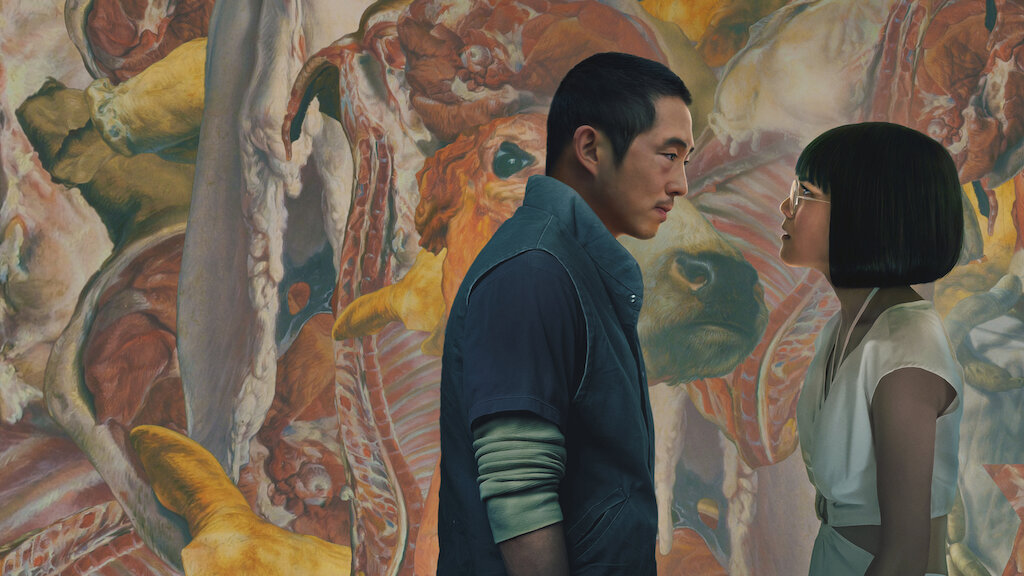Reality is not relevant to yesterday’s history, yet generational trauma transcends space and time to transmit emotional and psychological suffering from one generation to the next. Legacy is a remnant of familial footprint that is preserved to maintain the utmost glory of lineage. Immigrants tend to be a self-selecting group of risk-takers who are natural entrepreneurs due to their arduous work ethic and perseverance for a better life for the next generation.
The parenting style of immigrants often consists of intermittent positive reinforcements depending on the child’s achievements and accolades. Over time the child realizes the toxic family dynamic of conditional love that is closely tied to accomplishment. Like Pavlov’s dog, children become conditioned to positive reactions from parents as they soon understand the direct correlation between success and satisfaction; and failure and disappointment. All these grandeurs come at a great expense as children are ingrained with the idea that merit constitutes overachieving and failing to do so will result in suspended affection from parents. The complex family dynamics that are submerged in generational trauma are condensed with multifaceted factors like disappointment, loneliness, insecurities, passive aggressiveness and unresolved wounds.
Generational trauma is a phenomenon that has been studied by sociologists for decades, but it is only recently that it has entered the public consciousness through the medium of mainstream media.
Netflix’s “Beef” deals with heavy topics like depression, loneliness, midlife crisis and classism through the emotion of anger. What starts as an ordinary road rage quickly turns into a dramedy that deals with a diverse range in its spectrum of human emotions that demonstrates the power to commit good, bad and ugly.
Rather than confronting their own insecurities, the flawed characters of Danny and Amy participate in projecting, thus taking zero accountability for their actions and spiraling further into an intolerable mess of hate, prejudice and jealousy. A24 production does a great job of depicting the generational trauma that immigrants face through Asian American storytelling. Providing an illuminating perspective of the experience of multiple sub-diasporas from the Asian continent, each with its unique history, experience, migration and settlement. “Beef” does a phenomenal job of combatting stereotypes while honestly addressing the familial pressure and intergenerational trauma that immigrant families face after relocating to a new country where cultural shock, discrimination based on race and alienation in a foreign land all create a stressful environment.
Through magical realism, director Lee Sung Jin transports the audience into the parallel absurdity between the two main character’s minds. While yearning for unconditional love but never having the luxury of receiving it leaves the characters feeling insecure, angry and empty all at the same time. Familial pressure, which is a manifestation of generational trauma and the stress of immigrating, is all part of an immigrant’s DNA where emotions are not evoked and the provocation of moving away from the norm is seen as shunning the society and culture one belongs from.
When the lens is pulled back, we can see the persistent threat of paralyzing social division that occurs in intergenerational family dynamics that is showcased not only in mainstream media but in other forms of entertainment as well. Disney’s 2021 movie “Encanto” portrays a magical Columbian family who had to take refuge in a foreign land, and the matriarch of the family keeps the family intact by shunning away the unconventional and outcasting family members who don’t conform to the family’s reputation. Maribel, the main character, craves to belong yet can’t relate and is labeled as the “only one without a gift.” Often in these complex family dynamics that deal with generational trauma sustained through migration, escaping genocide and persecution leads to rage towards a singular target who is seen as the scapegoat of all the miseries. Usually considered the black sheep of the family, we can see this trope in “Encanto” through the character of Bruno, who loves his family yet feels isolated and distant due to prior treatment and misunderstanding that never got resolved and only generated family myths and rumors. As the story unfolds, the family’s history of loss and trauma is revealed, thus opening past wounds that never healed yet left deep scars that affect the family hierarchy in its present.
Another portrayal of passed down trauma due to generational trauma amongst family, communities and nations can be seen in Disney’s “Coco,” where Miguel, the protagonist, is forbidden to practice music due to his family’s past trauma where his great grandfather allegedly chose a musical career over his family. The contempt isn’t of art itself but the unhealed past traumas that had to be confronted by young Miguel in his journey across the Land of the Dead. Disney’s first Polynesian princess “Moana,” confronts the big bad demi-God Maui and her ancestors’ generational trauma to restore the heart of Goddess Te Fiti so that her people can go back to their roots of voyaging across the ocean and returning to their earlier profession of explorers and navigators.
Take “Lion King’s” premise as an example. Simba, who is an orphan, was once the pride of his tribe. Estranged from his lineage to reach his former glory and restore his father Mufasa’s honor, Simba has to confront the trauma of his father’s untimely passing to bring harmony back to his kingdom thus facing his history and overcoming the pain.
It’s not just limited to independent production houses like A24 and entertainment giants like Disney. Other forms of mainstream media representation in the form of books to Broadway musicals can also be seen. Considered an American classic literature F. Scott Fitzgerald’s “The Great Gatsby” has underlying themes of generational trauma from both old money and new money individuals. Despite privileged backgrounds and inherited wealth, there is a deep-rooted emotional dilemma and unfulfilled desires that stem from complicated family histories. “Show me a hero, and I will write you a tragedy,” which is often associated with Gatsby’s theme, highlights the inevitable lack of immunity from experiencing suffering. This challenges the concept of the fragility of human existence when his abusive and poverty-ridden upbringing haunts a formidable character like Jay Gatsby. His constant need to prove his worth and love by throwing lavish parties is a cry of his younger self to belong with his peers and Daisy Buchanan, his love interest. This 1920s novel depicts the life of WW1 veterans returning from Europe in the age of flappers and glamor, yet they are traumatized by the impact of the war, thus emerging in a new era of trauma. Set against the backdrop of wealth and pursuit of the American Dream, Gatsby’s character arc is controlled by his troubled past and sustained generational trauma from his childhood.
Dreams travel across generations. American Broadway actor Lin Manuel Miranda in the Broadway musical “Hamilton” described the USA as, “America, you great unfinished symphony, you sent for me. You let me make a difference, a place where even orphan immigrants can leave their fingerprints and legacy.” In the musical, we see the generational trauma of an orphan from the Caribbean whose sole purpose is to leave behind a legacy and make a name for himself. His ambition is guided not just by power, acknowledgment and prestige but also by securing his legacy, thus preventing the world from forgetting him. Fighting in the American Revolutionary War and his impoverished upbringing made him a product and a victim of generational trauma. Hamilton’s immigrant spirit of taking risks allowed him a seat at the table with the likes of George Washington and Thomas Jefferson. His name is synonymized as the founding father of this nation due to his spirit and work ethic. The American dream is a promise of hope that suggests that one can have a humble birth with a tragic past, but with hard work, determination and perseverance, one can have a successful life.
It is a promise that guarantees progress, humility and growth at the cost of sacrificing time, relations, and comfort. Indian American Pulitzer Prize author Jhumpa Lahiri captured the cultural tension between young protagonist Gogol and his father as a first-generation and Bengali immigrants, respectively, in her debut novel “The Namesake.” Like Simba, Hamilton and Gatsy, Gogol also tries to grasp intergenerational trauma as he explores his cultural identity that he initially saw as a burden but later came to wear it as a badge of honor.
American philosopher Eric Hoffer once said, “disappointment is a sort of moral bankruptcy- the bankruptcy of a soul that expends too much in hopes and expectations.” Immigrant parents’ high expectations, if not met, result in disappointment and the children are too familiar with the concept of bringing dishonor to their family name. This cyclic behavior of shame and coercion creates dependency. The manipulative and devaluing indifference of older generations often results in hindering free thinking and critical problem-solving skills. For most immigrants, generational trauma is a perpetual reality that acts as a backdrop in their lives where there is constant internal unrest that clashes with external conflict. Overtime, intimidation, fear of failing and self-doubt become constant companions that sabotage self-esteem, chances of intimacy and emotional intelligence. Maslow’s hierarchy of needs is a sociological theory that identifies the five fundamental needs that must be met for people to be at their optimum functioning. Amongst the different stages of physiology, safety, belonging and esteem is the most important critical stage of self-actualization. Undergoing generational trauma forbids people from reaching this enlightenment stage of self-actualization and prevents them from realizing their true capabilities and never fully able to reach their full potential hence reigniting the deep-rooted shame.
“Battle Hymn of the Tiger Mother” by author and Yale Law Professor Amy Chua centers around Chua’s parenting style, which is deeply rooted in generational trauma and cultural expectations from her Chinese heritage. When released in 2011, Chua’s treatment of her daughters raised a lot of eyebrows and concerns about how our own childhood experiences and trauma are inadvertently passed onto our children. Chua came under criticism for perpetuating Eastern cultural stereotypes of strict and controlling Asian parents, thus propagating the narrative of toxic family dynamics that engage in generational trauma. American writer Alice Sebold once said, “ Poison and medicine are often the same thing, given in different proportion.”
Similarly, unsolicited advice is a double-edged sword.
Too many critics, not enough credentials and pressure from parents create complacency among children, thus creating manifestations of personal conflict with self-identity. It’s not a battle of generations. It’s a battle between two mindsets as immigrants forgo their motherland to ensure that what they were not fortunate enough to receive will be extended to the next generations. While having good intentions, the journey itself is paved with complicated family narratives, a lack of acceptance and the story of cross-cultural pollination between the East and the West.
Generational trauma constitutes a trickle-down effect that sabotages personal and familial relationships due to past oppressions and cultural displacement. The main characters are the chosen ones to balance out the bad while discovering themselves and restoring the generational trauma of a collective population, often in the form of family dynamics.
Disney’s various strategies of tackling serious topics like generational trauma through the main character’s struggles and the ultimate self-discovery journey allow the audiences to become passengers in a healing journey. This liberating process of raising awareness and promotion of healing while building resilience and gauging the impact of trauma is what makes the consumption of film and other mediums of entertainment worthwhile.
In a way, art truly does imitate life, don’t you think?
Words by Anika Chowdhury
Anika Chowdhury is an undergrad student at CUNY’s Hunter College, majoring in Public Health and double minoring in Journalism and International Relations. She speaks five languages and has co-authored a project on gene research which was published at the National Center for Biotechnology Information. Her work as a curatorial researcher at CUNY’s Kupferberg Holocaust Center has taught her the importance of advocacy to prevent intolerance and prejudice against minorities. Anika wants her engaging storytelling to generate conversation and promote social awareness by finding her own voice while helping others find theirs.








